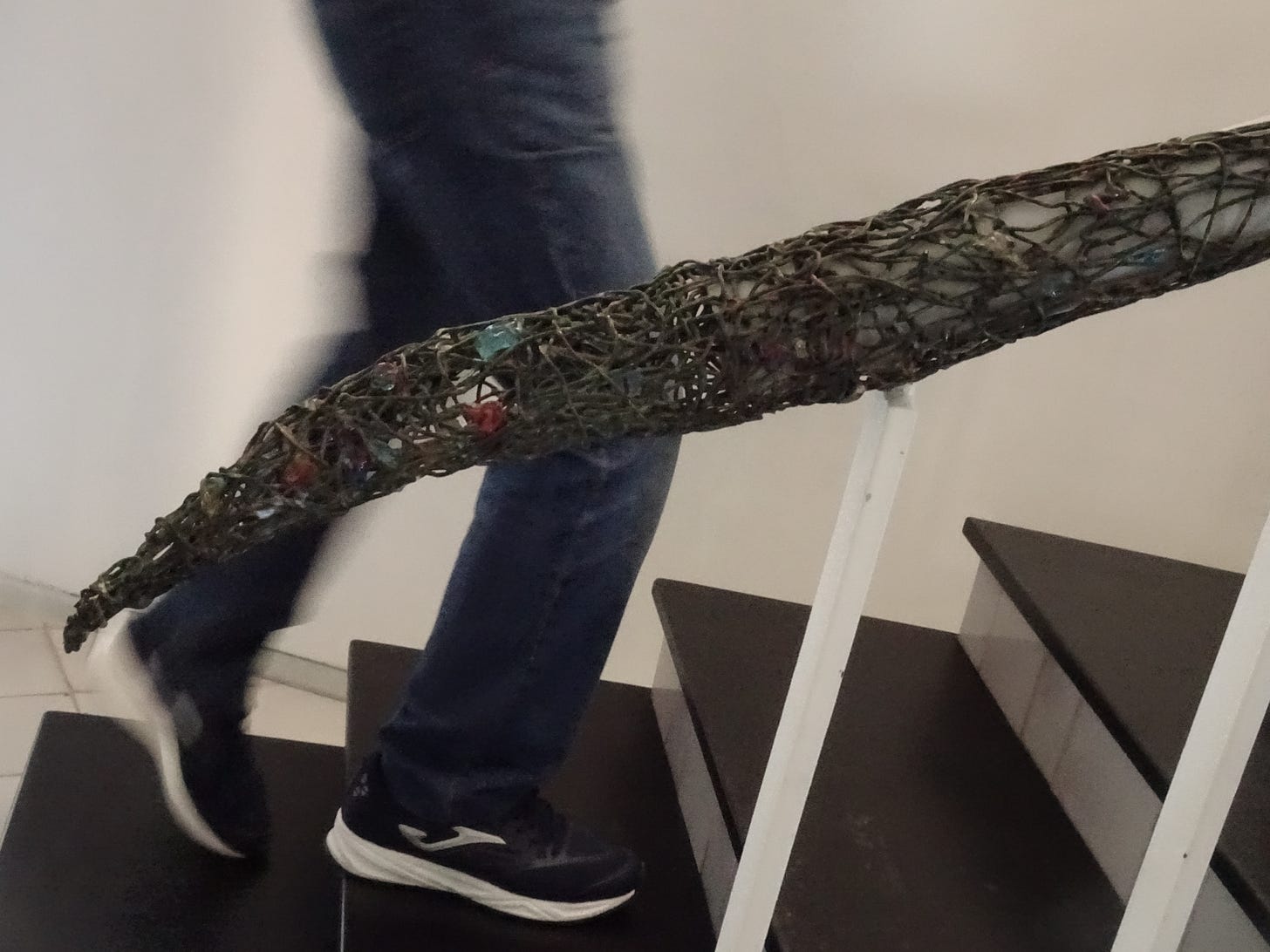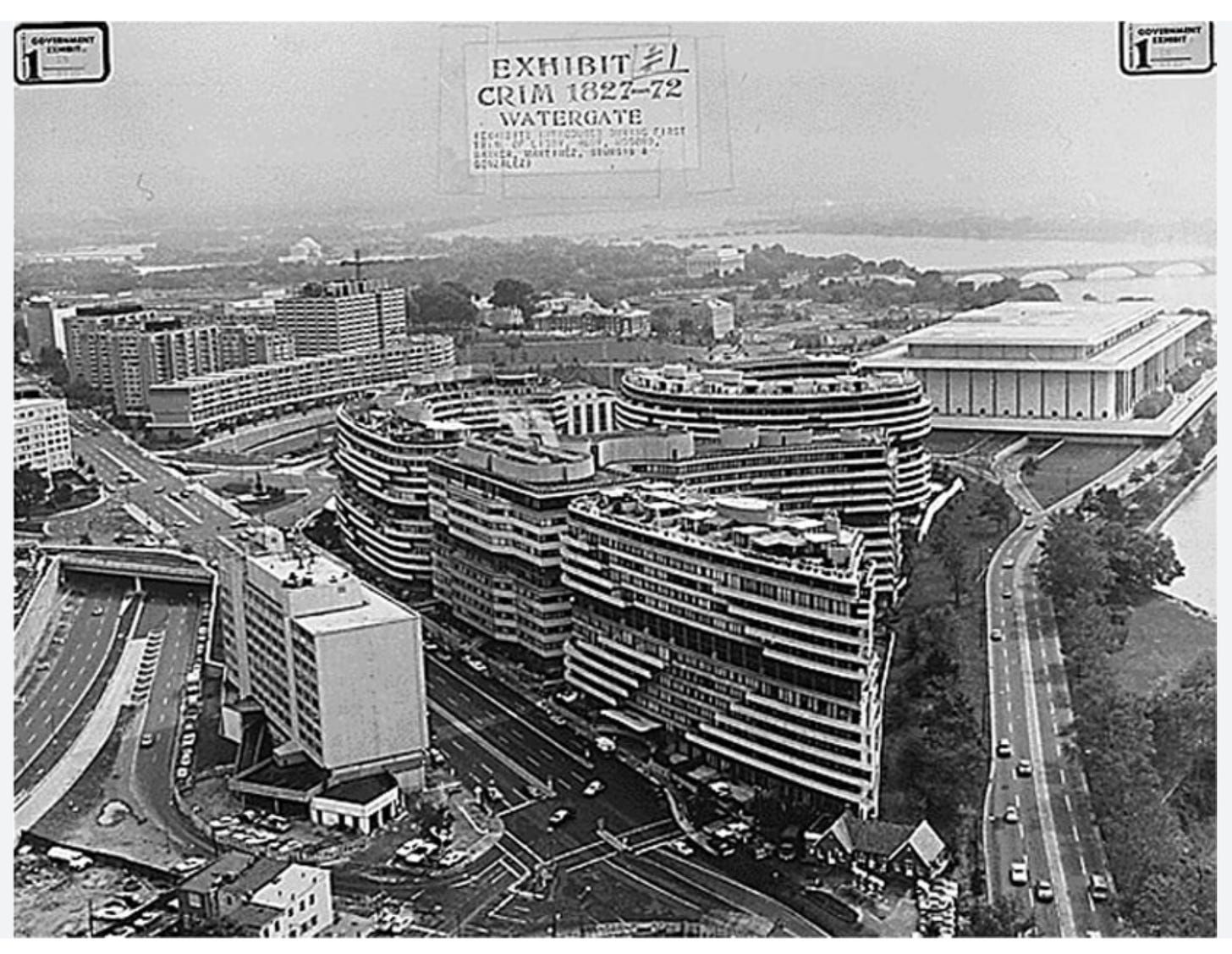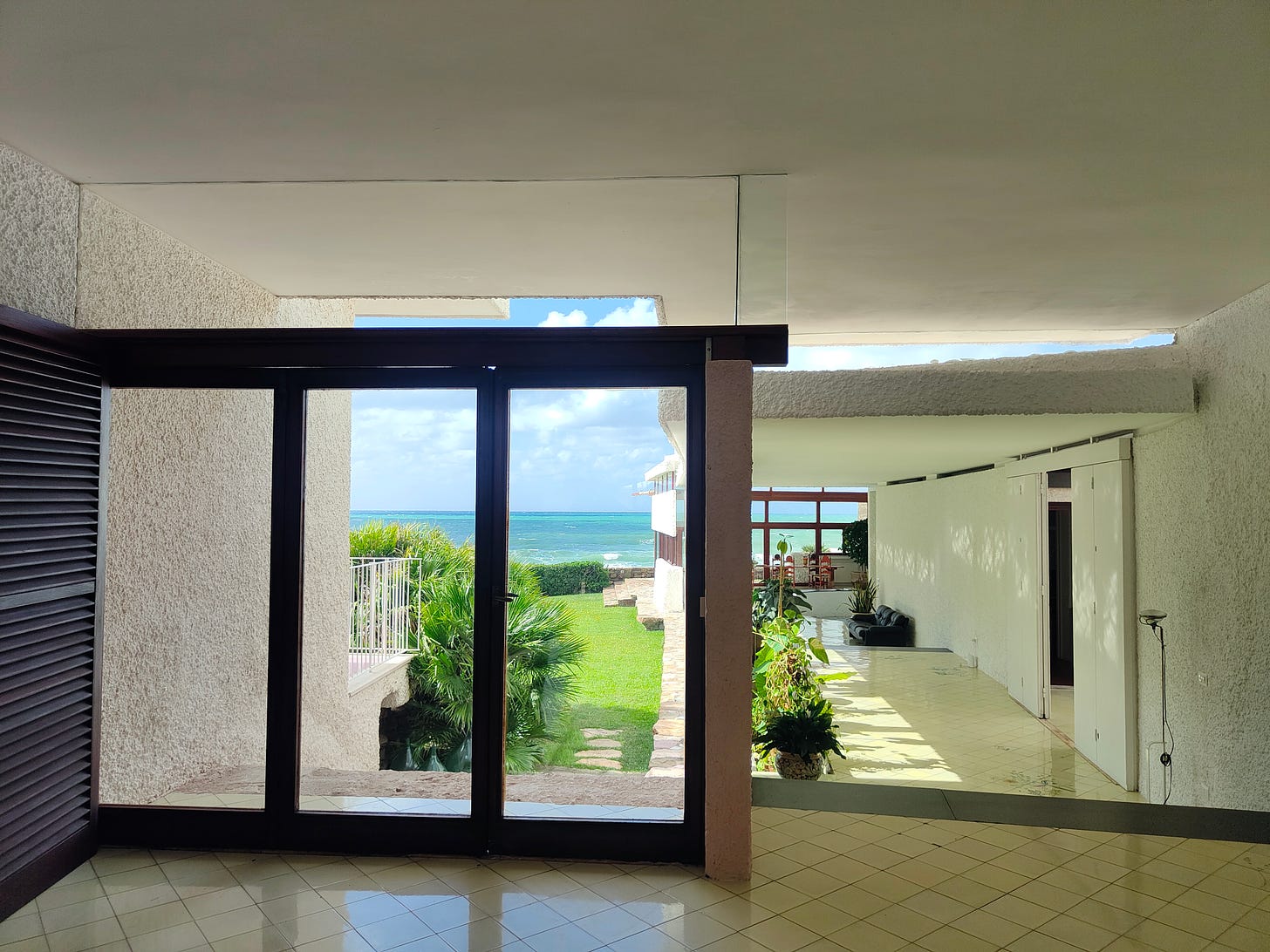Trolling the architect of the Watergate, Luigi Moretti, beginning with a beach-house in Santa Marinella.
What is not to like about this modern waterfront villa designed for a couple of Rome's most elite socialites during the height of Italy's Dolce Vita. A first look at Luigi Moretti's legacy.
There are a handful of modern architects whose buildings are so iconic they draw countless architecture enthusiasts from around the world. Some of these star architects are practically household names, like Frank Lloyd Wright, or Alvar Aalto or “Le Corbusier.” Others belong to smaller niche categories, producing some unforgettable structures, like the MAXXI museum by Zaha Hadid, or the Oslo Opera House by Snøhetta. Oddly enough, most people don’t associate modern architecture with Italy. The country represents itself as the home of great traditions, a place to take in the past. But there are lots of significant architectural masterpieces produced by Italian architects from the 20th and 21st centuries that can grab your imagination.
One such prolific architect who has produced more than a couple architectural masterpieces in the mid 1900s is Luigi Moretti, best known for his curvaceously designed Watergate Complex, in Washington DC. By good fortune, I recently had the opportunity, courtesy of “Les Seminars des Caprarola,” to join in on a visit to La Saracena, the seaside villa in Santa Marinella designed by Moretti and completed in 1957. Just an hour outside of Rome, this private home has been delicately restored after a long period of inexplicable abandonment.
Born and educated in Rome, Moretti shunned academia, dedicating himself instead to the practice of architecture. During the interwar period, under Fascism, Moretti used his close connections to the Fascist party to design numerous large scale public projects, such as youth centers, sports complexes, and expansive celebratory esplanades for Mussolini’s incipient totalitarian regime.*
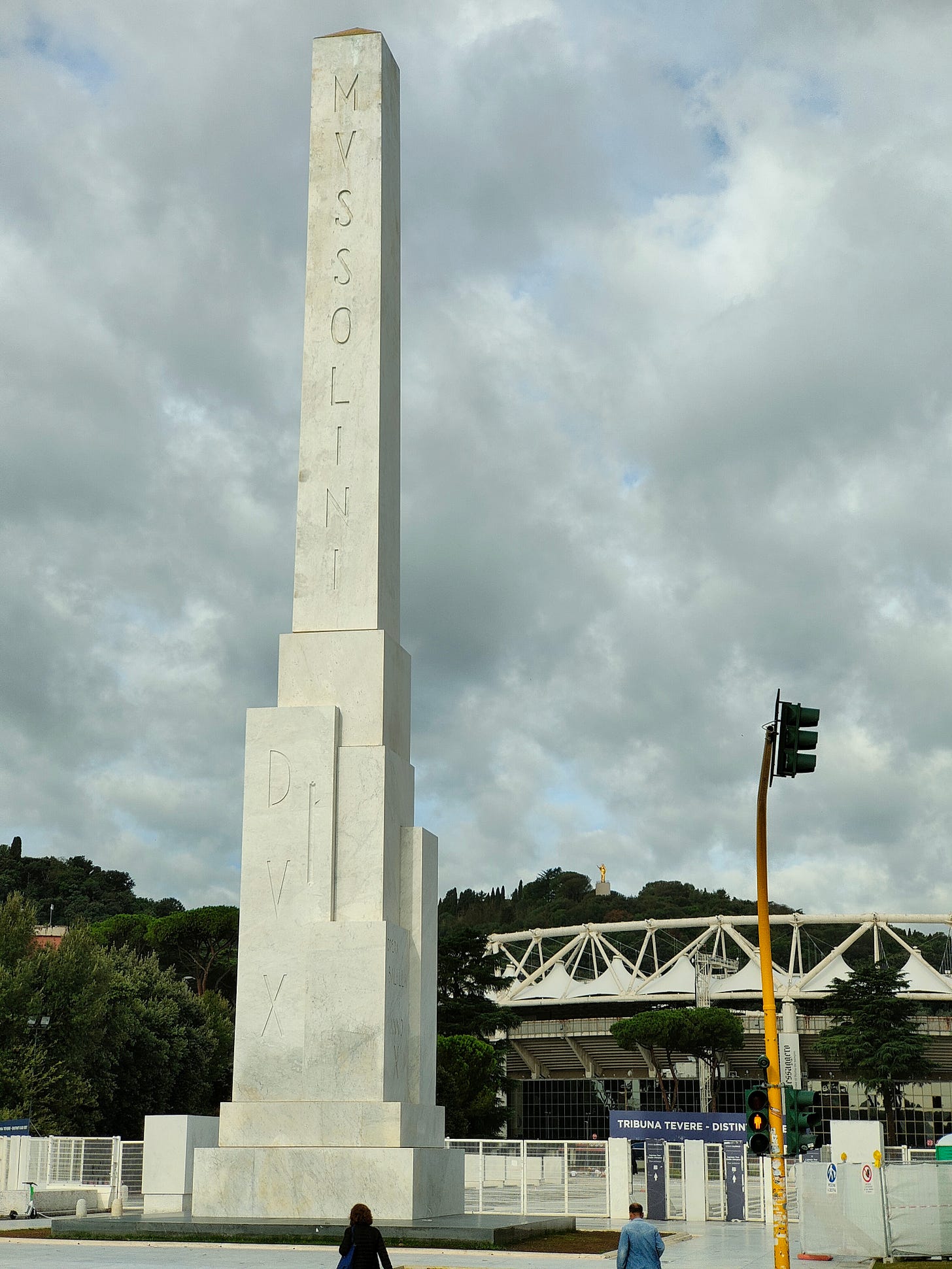
Following the war, after serving a short stint in prison for his collaborationist past, Moretti returned to the profession to build again. This time around he was supported by conservative investors who backed his large scale residential projects, as well as an elite clientele who commissioned private homes and apartment buildings. Moretti rose to become one of the choice architects of the “dolce vita,” designing the modern look favored by Rome’s elite, that inspired, no doubt, the Italian director Federico Fellini.

While Moretti sidestepped teaching, he did find ways to critically express himself, on the pages of the architecture magazine he founded Spazio (Space) in 1950, and that he then spun into an art gallery in 1954. Moretti found time both to practice architecture and write on a range of creative subjects while staying clear of political minefields. Besides his free flowing architecture, and his deep interest in the arts, he also praised 16th century Mannerism and the consequent emergence of the Baroque. His obsessions with the subject led him to produce a film on Michelangelo. He also held a deep interest in mathematics and pioneered the concept of parametric architecture.
I have some personal history of sorts with Moretti and his Watergate: I am old enough to remember listening to the Nixon’s impeachment hearings on television, and when I became a young architect, by another twist in fate, I was called in to work on the renovation of a large penthouse apartment in the Watergate complex. Nothing could be more darkly clownish than the way Nixon ordered his “plumbers” to burglarize the Democratic headquarters in Moretti’s high-end Washington residence. Nor more comedic then how the caper abruptly failed, because the lookout, in the Howard Johnson’s hotel across the street, was distracted watching “The Attack of the Puppet People” on TV instead of noting the patrol car parking at the Watergate’s lobby entrance.
The Watergate didn’t bode well for me either. The pre-tensioned reinforced concrete floors made necessary for achieving the building’s signature curves proved to be a working nightmare. The architect who employed me at the time, Jack Coble, faced enumerable delays as a result, and the client subsequently filed multiple lawsuits. This experience, I confess, dragged me into an existential reassessment of the profession. But the Watergate “complex” or should I say “syndrome,” for what its worth, has become part of our common vocabulary: it will forever spell national scandal and political cover-up.
Luigi Moretti’s career can be described as colorful to say the least. One of his fascist era buildings, the Casa delle Armi, or Accademia della scherma, (the fencing academy) was converted into a high security courtroom for Mafia trials. In better shape is the postwar apartment building, la Palazzina il Girasole, completed in 1950. Also located in Rome, it has been home to some of the great protagonists of postwar cinema, including the renowned Italian comic actor Totò, the director Roberto Rossellini and his then companion Ingrid Bergman.
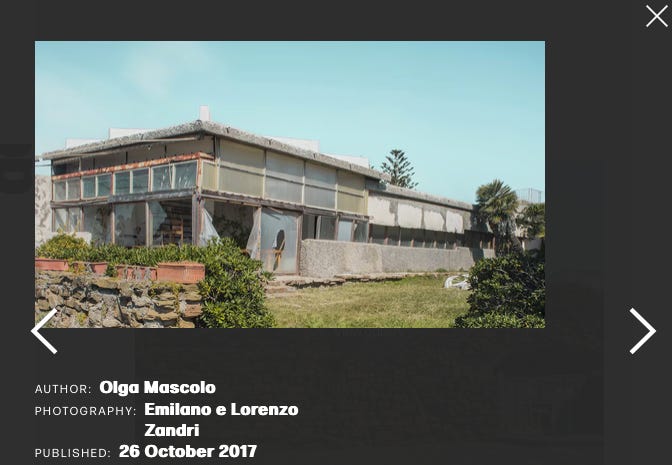
Which brings me back to La Saracena, Moretti’s hovering seaside villa in the town of Santa Marinella. There are in fact three buildings that make up the design, though they have separate functions, and nowadays have separate occupants. The restorations to the building complex, undertaken by Paolo Verdeschi and his team, the architects Flavio Fiorucci, Giulia Seppiacci and Giulio Valerio Mancini, were incredibly complex, given the flying cantilevered roofs, the volume of glass, and simply the lack of information regarding the original designs and drawings. The sea gate, for example, first created by the American artist Claire Falkenstein, was re-conceived by Maria Costanza Magli, who we met during the day’s tour.
The restoration brings La Saracena back to life, though not exactly to a life compatible with the times we live today. The glass expanses, the floating planes piercing the horizon, the majestic framing of the sea views, come together into one incredibly poetic vision of architecture as a translucent eggshell teetering over the water’s edge. The problem is that all this fragility is hardly reassuring in an age of storm surges, rising sea levels, stifling summer heat, and other increasingly extreme weather events. Lets just say this house will give you a front row seat, and its probably worth it.
Luigi Moretti’s architectural career remains nonetheless a conundrum for architects and historians today. Moretti’s embrace of fascism has left a indelible mark on his otherwise impressive status as one of the all-time great architects in Italy. Nonetheless, architects as well as star-architects still have to contend with their questionable choice of clients: today’s controversial benefactors, like authoritarian media corporations, megalomaniacal dictatorships, and more recently the rise of uncompromising tech giants are no less gruesome patrons.
The architectural profession is fraught with hard choices: its tough to screen clients based on moral rectitude. Of course, for Luigi Moretti, who was deeply entrenched in fascist culture during the Mussolini era, the opportunity to work for the Regime was never considered a moral dilemma. In the ensuing postwar period Moretti left behind his political past but not his core aspirations. His clients remained part of the upper class and the corporate elite.
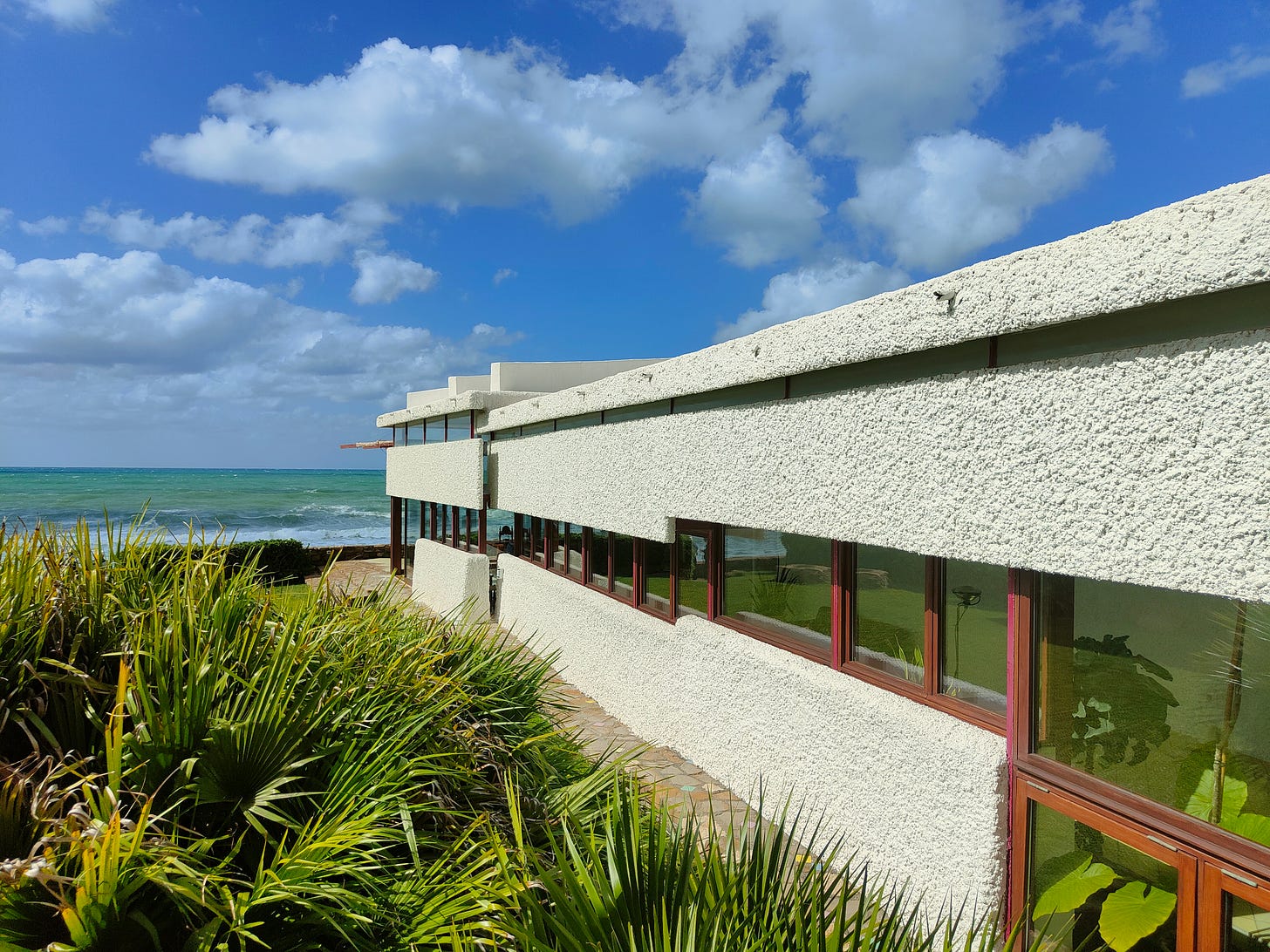
Few true aficionados of Moretti’s work hold him in contempt for his past political affiliations, most still see him as the great architect he obviously is. If there is an irony, it has to do with his work on the Watergate, and the way this mega complex in the heart of Washington D.C. would be tainted with political scandal for a very long time to come.
Thinking about the “The Attack of the Puppet People,” I cannot help but wonder if the “evil” puppeteer scientist who shrinks his human captives to exert control over them is not in some ways a metaphor for the architect who cannot stop himself or herself from having ultimate control over the human habitat—politics be damned.
*NOTE: I will soon be writing a second chapter on Luigi Moretti this time taking a closer look at his interwar architectural practice. Stay tuned!
______________________
THANKS FOR READING! AND PLEASE CONSIDER SIGNING UP FOR A FREE SUBSCRIPTION.
BREAKING NEWS: WE JUST OPENED THE OPTION FOR PAID SUBSCRIPTIONS. YOUR CONTRIBUTION WILL GO TOWARDS TRAVEL EXPENSES INCURRED WHEN VISITING SUBJECTS COVERED IN THIS NEWSLETTER.
PAID SUBSCRIBERS WILL RECEIVE AT NO EXTRA COST ONE HIGH RESOLUTION ORIGINAL PHOTO OR REPRODUCTION OF AN ARTWORK OF THEIR CHOICE FEATURED IN THE SUM TOTAL NEWSLETTER. (NOTE: THIS OFFER IS LIMITED ACCORDING TO DEMAND AND WILL EXPIRE DECEMBER 30 2024.)
CITATION SOURCES:
Luigi Moretti (architetto) Wikipedia.
Watergate Exhibit Evidence. Richard R Nixon Presidential Library and Museum.



